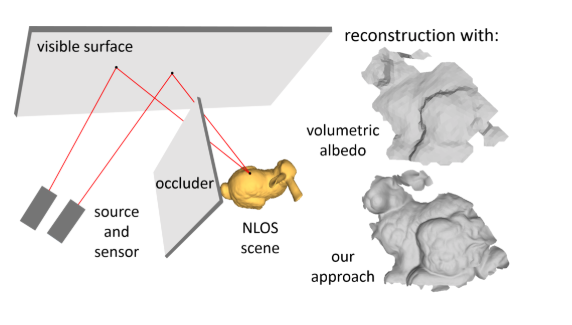I don’t know if you have heard of “Ghost Probe”.
Not only is the name scary, in fact, “Ghost Probe” is also something that many drivers are scared of.
Simply put, a “ghost probe” is when a driver suddenly drives a pedestrian or a non-motor vehicle out of the blind zone of the obstruction while driving, causing the driver to avoid. “Ghost Probe” is also one of the causes of many serious traffic accidents. (The picture below may cause uneasiness, caution!)

Recently, a research team of four universities including Stanford University and Princeton University published a Published The new algorithm they studied, this algorithm can achieve the effect of” partition observation “as long as it is used with ordinary cameras and ordinary laser light sources.
According to the research paper, the system can realize “non-line-of-sight imaging” systems with high resolution and high speed. The system can distinguish hidden objects up to 1 meter away.
What is “non-line-of-sight imaging”? Simply put, this system can see those obstructed objects, and more simply, it can see through.

Actually, this imagingThis is not the first time the system has appeared. Inspired by seismic imaging last year, Intel and Stanford University have developed an imaging system that can also “perspective” by capturing the difference in acoustic echo time.
Earlier, MIT also developed a set of imaging algorithms that analyze the shape and size of shadows to reconstruct occluded objects.
The newly discovered features do not require special hardware, just an ordinary camera and ordinary laser pointer.
The specific implementation principle is the use of diffuse reflection of laser light. First, the laser is projected on the wall, and the wall will reflect the laser to the hidden target. At this time, the laser will generate a scattering, and a dot pattern can be formed under the camera.

Although these speckle patterns look like a “buck” in human eyes, they are actually traceable. The research team used a machine algorithm to analyze these clusters of reflected spots, and finally simulated the image of the occluded object.
In the experiment, researchers tested the technique by occluding images of letters and numbers 1 cm high, and hiding those numbers and letters in a corner one meter away from the wall.
As a result, the system produced the correct image in 1/4 second.
The research team said that compared with the previous non-line-of-sight imaging system, the new scheme requires shorter exposure time and is more “robust” in algorithm.

At present, the project has been officially “owned” by the US Defense Advanced Research Projects (DARPA).
Researchers said that computer vision technology has been widely used in many fields, in addition to the field of autonomous driving, there are also home security, special search and rescue tasks.
This technology is expected to be applied to autonomous driving, to solve the “ghost probe” and other problems.
The illustrations in the text are from: Optica